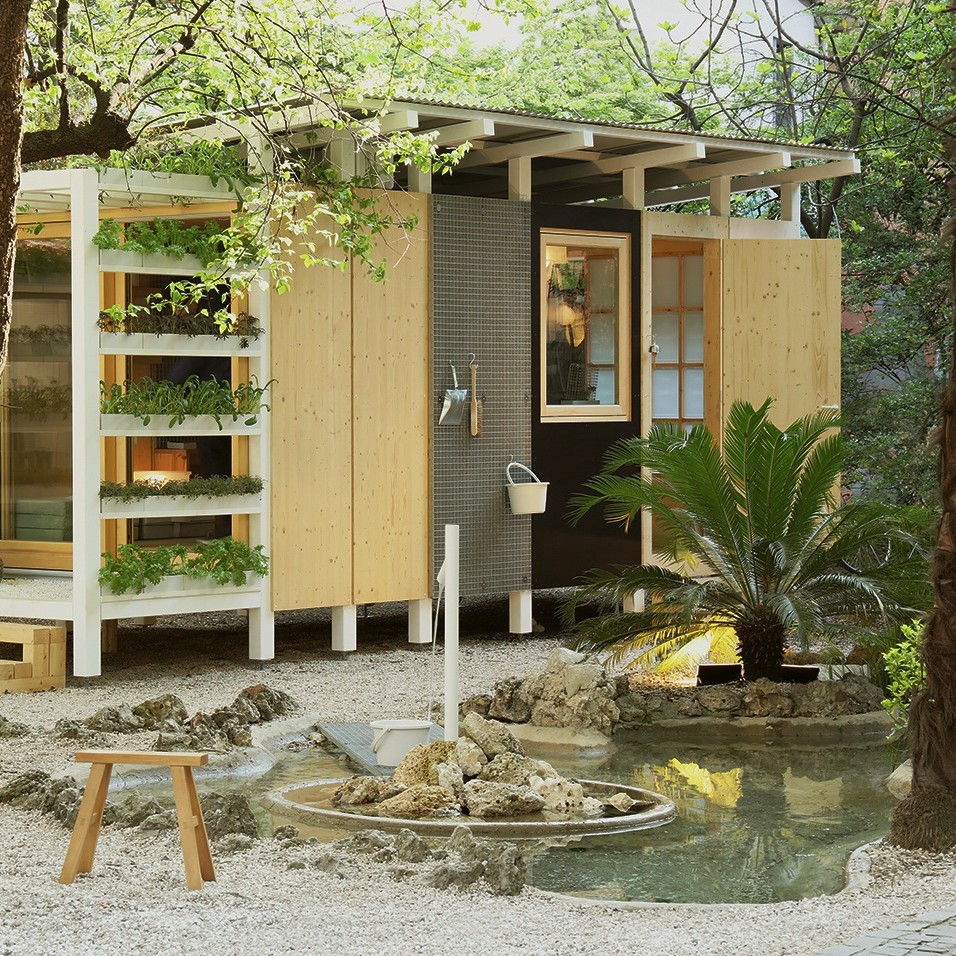10 Inspirational Community-Focused Brands
Many brands talk about community. In fact, it’s a big part of branding today – whether it’s genuine or not. Here are 10 inspirational community-focused brands who run the spectrum from start-up to big name to cult favourite.
Many brands talk about community. In fact, it’s a big part of branding today – whether it’s genuine or not.
Part of this is because consumers are more fickle than ever. They’re happy to jump between brands and try out new names because the benefits of sticking with a single brand are often lacking.
As a result, brands are realising that focusing on community is one way of making sure customers keep coming back. Consumers who are buying into something more than product or price represent a lot of value.
It’s not easy to get community right though. Here are 10 inspirational community-focused brands who run the spectrum from start-up to big name to cult favourite.
1. Glossier
One of the best-known examples of a brand that was born from a community.
Now valued at over $1 billion, Glossier began life as skincare and beauty blog Into the Gloss. Drawing from interactions with and comments from the blog’s readers, founder Emily Weiss created Glossier to create products that gave the community what it wanted, particularly around the ‘no makeup makeup’ aesthetic.
It’s a great example of how building a community first gives a brand valuable insights into customer pain points and what they want, allowing it to develop products that perfectly meet those needs.

2. Monica + Andy
The genesis of the fast-growing US organic baby clothing and accessories company Monica + Andy came when co-founder Monica Royer had her first baby. She wanted to dress her new arrival in the safest materials possible but struggled to find baby clothes that met her criteria.
Together with her co-founders, Royer launched her own brand of quality organic baby clothes that were made of child-friendly and safe materials that didn’t contain things like lead, flame-retardants and phthalates.
Aside from the popularity of its products, which fill an under-served gap in the market, Monica + Andy focuses on building a community around all things parenting. This includes in-store events and classes, and even a podcast. Customers can interact with each other and get insights from experts, which helps them to feel less alone in their parenting journey.
By positioning itself as a trusted source for parents, Monica + Andy naturally builds brand loyalty.

3. Nike
US sportswear giant Nike may not need any introduction, but this well-known name has long realised the value of community for long-term success.
Nike rewards those who sign up to its membership scheme with benefits like exclusive access to products, customisation services and access to expert trainers and coaches. This multitude of benefits encourages consumers to join, which gives Nike access to masses of data about buying behaviour, preferences and even workout routines.
In recent years, Nike has been leveraging this data to create community-specific products and stores. This includes Community Stores which hire local staff and curate product assortments based on the preferences of nearby customers. Nike Rise stores also display localised real-time data from Nike’s various apps, such as the Nike Run Club, and offer services and programming for local consumers.
This approach brilliantly shows how brands can leverage the information they have about their communities to create better and more targeted experiences for them.

4. Shinola
Shinola is a US luxury lifestyle brand that focuses on timeless design. It began life in 2011 as a new premium watch manufacturing brand. Its USP is that its watches are assembled by hand in Detroit.
The brand’s ethos of classic design, quality construction and American manufacturing struck a chord with luxury consumers. Shinola has since expanded into designing, collaborating on, and curating other accessories and lifestyle products with the support of expert speciality manufacturers from across the US.
By focusing on the idea of living well and encouraging consumers to be confident in their own unique style, Shinola has become a central point for a community of like-minded customers. It offers an aspirational lifestyle for customers to buy into, including operating its own hotel in Detroit.

5. Kith
Founded in 2011 in New York, US fashion and lifestyle brand Kith sells a mix of leading brands and its own label collections.
It’s the brand’s eye for quality and design, both in its own product drops and collaborations, that have made it a cult favourite. Customers trust its uncompromising eye and knack for curation.
As a result, Kith acts as a lightning rod for a community of like-minded individuals. The brand supports this further with beautifully designed stores that blend the boundaries between art exhibition and retail. Each store has its own unique identity and a highly curated design, which makes them destinations for customers. Visitors will spend longer in the stores in order to soak up the atmosphere.
Kith has also expanded its brand into food & beverage offerings, including its cereal and ice-cream bars (Kith Treats) and high-end restaurants (Sadelle’s). The company understands that when you focus on community, you can create more ways for people to spend time – and money – with you.

6. Rapha
Cycling brand Rapha’s success lies in its community.
The company’s aim is to inspire people to live life by bike. It does this by creating cycling clothing to improve the riding experience. But Rapha also understands that some of the best parts about cycling are the social elements, including other people you meet and spend time with.
As a result, it launched its own cycling club, the Rapha Cycling Club, and a series of Clubhouses across the world. Cycling fans can visit these spaces to meet with other cyclists, watch races, enjoy a coffee, and join rides that start and finish from them.
Rapha’s community focus works because the company founders are cycling fans first and foremost. It knows what cyclists want and appreciate because they’re the same things Rapha wants and appreciates.
7. Gymshark
UK-based fitness apparel brand Gymshark is a direct-to-consumer success story with a valuation of over £1 billion. The company has created its own highly popular workout and gym clothing ranges, built off insights into what the lifting community wants, but it’s the accompanying culture that has been a big part of Gymshark’s rise to the top.
The brand openly states that ‘our community is the most important part of our story’. Gymshark understands that the clothing doesn’t matter as much as the sense of belonging that its customers have through coming together with like-minded individuals.
In 2022, Gymshark opened its first-ever physical store in London with a focus on community over product. The store hosts workout classes, free personal training sessions, a running club, and events.
Gymshark understands that doing more than selling product is the best way to build a loyal brand community.
8. Aimé Leon Dore
Influenced by classic hip hop and basketball, New York fashion and lifestyle brand Aimé Leon Dore has become known for its mix of high-end fashion and sneaker culture.
Key to its success has been the influence of founder Teddy Santis's experiences growing up. This can be seen in the brand’s flagship Manhattan space where personal touches are part of the décor. This human element makes it easy for like-minded customers to relate and buy into the brand.
The store also perfectly illustrates the mix of high-end and streetwear that Aimé Leon Dore does so well. Visitors get a feeling of the exclusivity of traditional luxury spaces mixed with the accessibility of street culture. Spending time in the store is like spending time in a clubhouse, which is exactly the point.
By fully immersing visitors in the brand, Aimé Leon Dore makes them feel part of it, which helps to build the sense of community.
9. Bandit Running
Founded in 2020 by members of New York’s running community, running apparel brand Bandit Running has been focused on community since day one.
In fact, the brand actively involves its customers – many of whom are runners – in the product design process. Each month Bandit invites customers to sit down with its chief design officer and talk about the things they would like from their running apparel. This community feedback has then helped inform some of Bandit’s designs.
It’s a great example of how using insights from actual customers can help inform more practical and desirable products. This also helps ensure that demand is there for new products and designs, which reduces waste and expense.
In addition, the brand community is likely to be more interested in products where it knows it had input. Feeling listened to and valued is a great way to build ongoing loyalty.
10. Saie
Clean beauty brand Saie was also born with community in mind from the start.
When the brand launched in late 2019, founder Laney Crowell also started a private Facebook group called ‘the clean beauty crew’. Her aim was to remove the distance between the customer and the brand to be able to communicate with them about their experiences with the products.
As part of this, members of the Facebook group (which numbers over 8,000 people) get access to products before they go on sale. Saie also asks the group’s opinions on everything from casting models to product shade ranges.
By making customers feel like they are an integral part of the brand, Saie gives them a sense of ownership, which helps increase loyalty. It also benefits from free market research and opinion gathering to shape its products and ensure demand.
By Jack Stratten, Head of Trends at retail trends consultancy InsiderTrends


